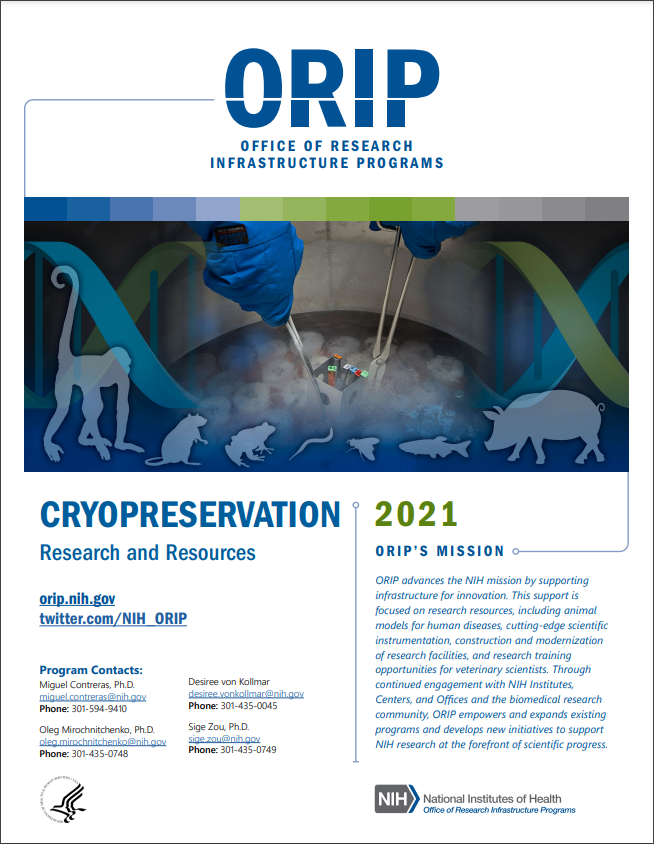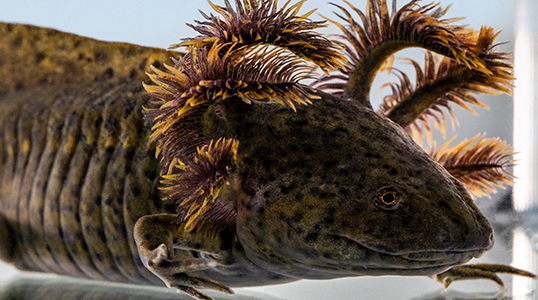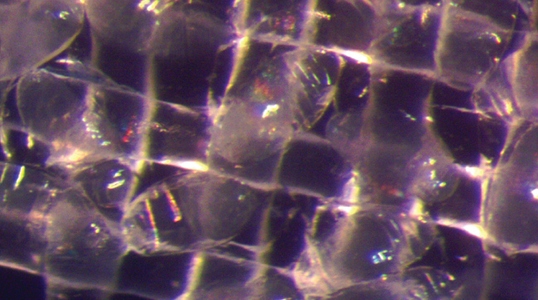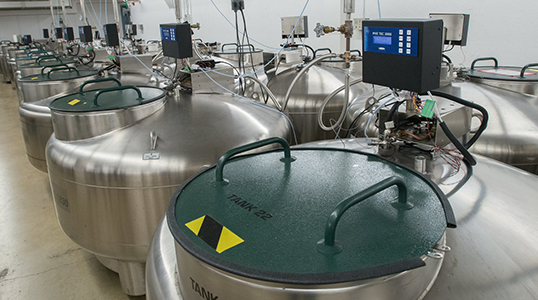Germplasm Preservation of Animal Models for Biomedical Research
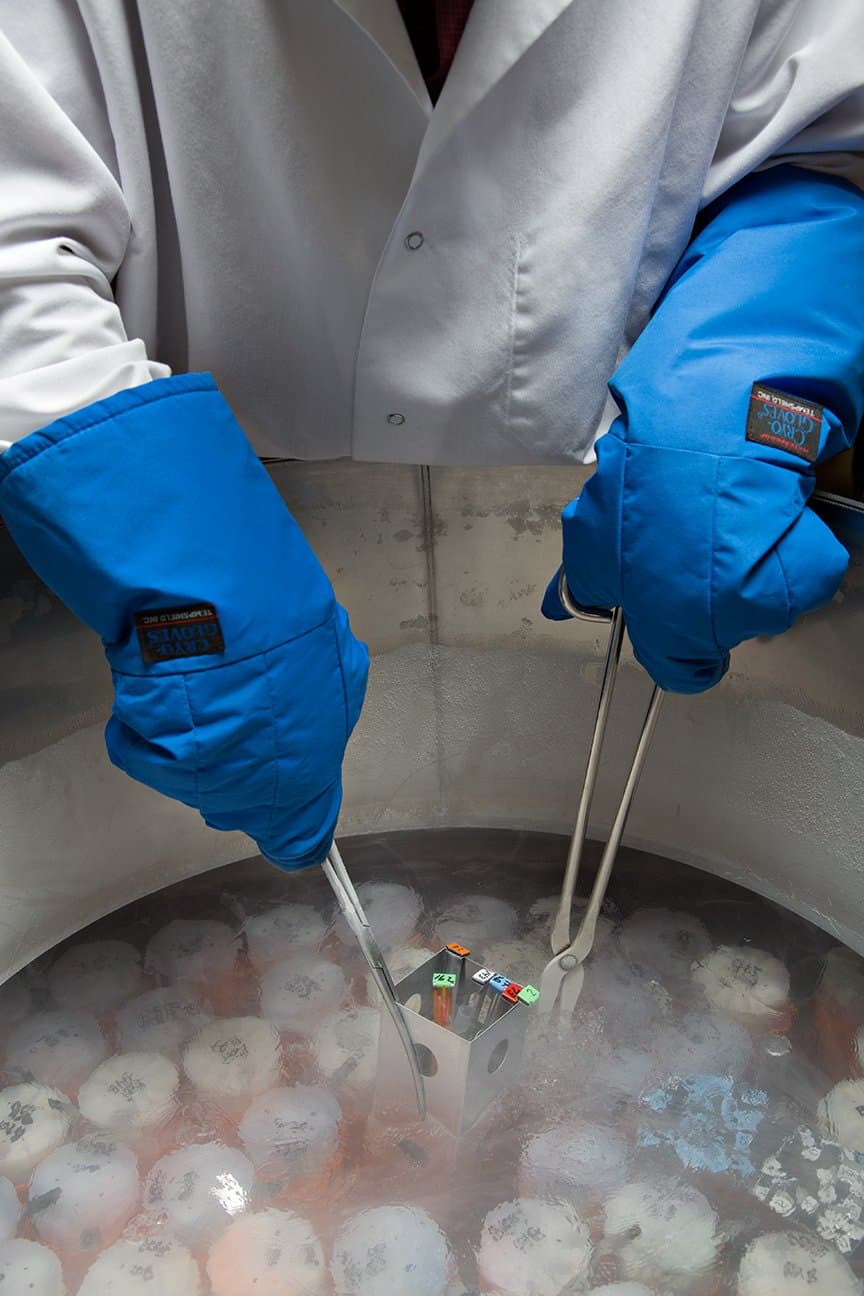
Animal models are essential to understanding human diseases and in maintaining human health through development of diagnostic approaches and therapeutic interventions. Large numbers of animal models of human disease are being generated at an unprecedented rate due to rapidly evolving technological advancements, such as gene-editing techniques. However, this rapid increase in essential animal models also is creating challenges in how to maintain these critical resources in reliable and cost-effective ways, as long-term preservation of such animal models will be key in ensuring efficiency, reproducibility, and transparency in biomedical research.
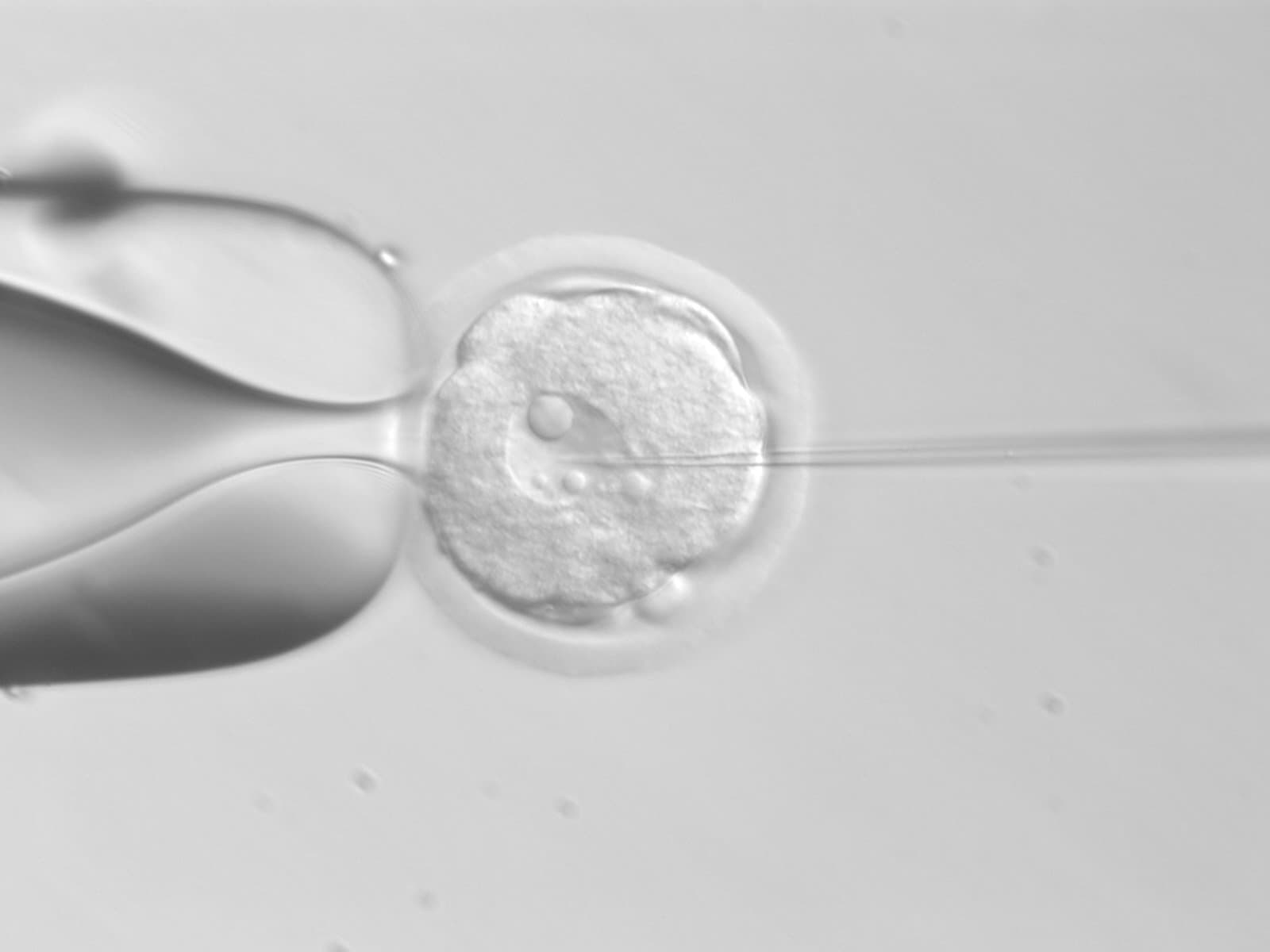
One solution to these challenges is to use germplasm preservation methods for long-term storage of valuable and evolving animal models. ORIP has supported research projects on developing efficient germplasm preservation methods, including cryopreservation methods, for diverse animal models, such as mouse, rat, and fish. These projects are developing new methods or improving existing methods to preserve embryos, eggs, or sperms for a variety of animal model species. Development of effective germplasm preservation technologies would serve the entire biomedical research community and further promote and conserve the value of animal models for human diseases.
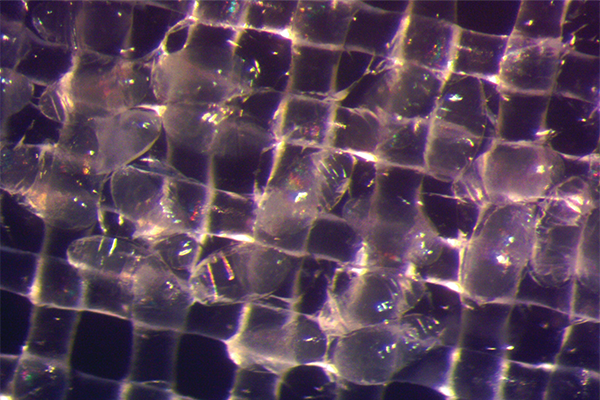
As part of the effort to respond to the needs and challenges identified by the research community and outlined in the reports of two workshops—“Cryopreservation of Aquatic Biomedical Models” organized by ORIP and “Cryopreservation of Drosophila Strains” organized by ORIP, in collaboration with the National Institute of General Medical Sciences and the National Institute of Neurological Disorders and Stroke—ORIP has published several funding opportunity announcements, including PAR-19-176, titled “Methods Development for Cryogenic or Other Long-term Preservation and Revival of Drosophila and Zebrafish Genetic Stocks (R21 Clinical Trial Not Allowed).”
Apply for funding under PAR-21-167 "Development of Animal Models and Related Biological Materials for Research (R21)," RFA-OD-22-013 "Resource-Related Research Projects for Development of Animal Models and Related Materials (R24)," and Parent R01 PA-20-185, which currently support the research topic of germplasm preservation.
Other recent ORIP activities in this area:
- ORIP fact sheet: Cryopreservation: Research and Resources
- ORIP Research Highlight: “Safeguarding the Valuable Genetic Stock Collections of Public Repositories”
Examples of projects funded by ORIP:
Drosophila cryopreservation and rewarming for long-term storage
R21OD028758
John C. Bischof
University of Minnesota
Related publication: Nature Communications
Development of a novel method for cryopreservation of Drosophila melanogaster
R24OD028444
Daryl Gohl
University of Minnesota
Safeguarding Genetic Resources of Aquatic Biomedical Models
R24OD028443
Terrence R. Tiersch
Louisiana State University
An Ultra-fast Cooling Device for Vitrification and Cryopreservation of Cells and Tissues
R44OD020163
Xu Han
CryoCrate LLC
Drying, Storing, and Reanimating Egg Germinal Vesicles to Preserve Fertility
R01OD023139
Pierre Comizzoli
Smithsonian Institute
Related Research Highlights
Recent Selected Grantee Publications
Establishing the Hybrid Rat Diversity Program: A Resource for Dissecting Complex Traits
Dwinell et al., Mammalian Genome. 2025.
Rat models have been extensively used for studying human complex disease mechanisms, behavioral phenotypes, and environmental factors and for discovering and developing drugs. Systems genetics…
Establishment of a Practical Sperm Cryopreservation Pathway for the Axolotl (Ambystoma mexicanum): A Community-Level Approach to Germplasm Repository Development
Coxe et al., Animals (Basel). 2024.
The axolotl (Ambystoma mexicanum) is an important biomedical research model for organ regeneration, but housing and maintaining live animals is expensive and risky as new transgenic lines are…
Conduction-Dominated Cryomesh for Organism Vitrification
Guo et al., Advanced Science. 2024.
Vitrification-based cryopreservation via cryomesh is a promising approach for maintaining biodiversity, health care, and sustainable food production via long-term preservation of biological systems…




